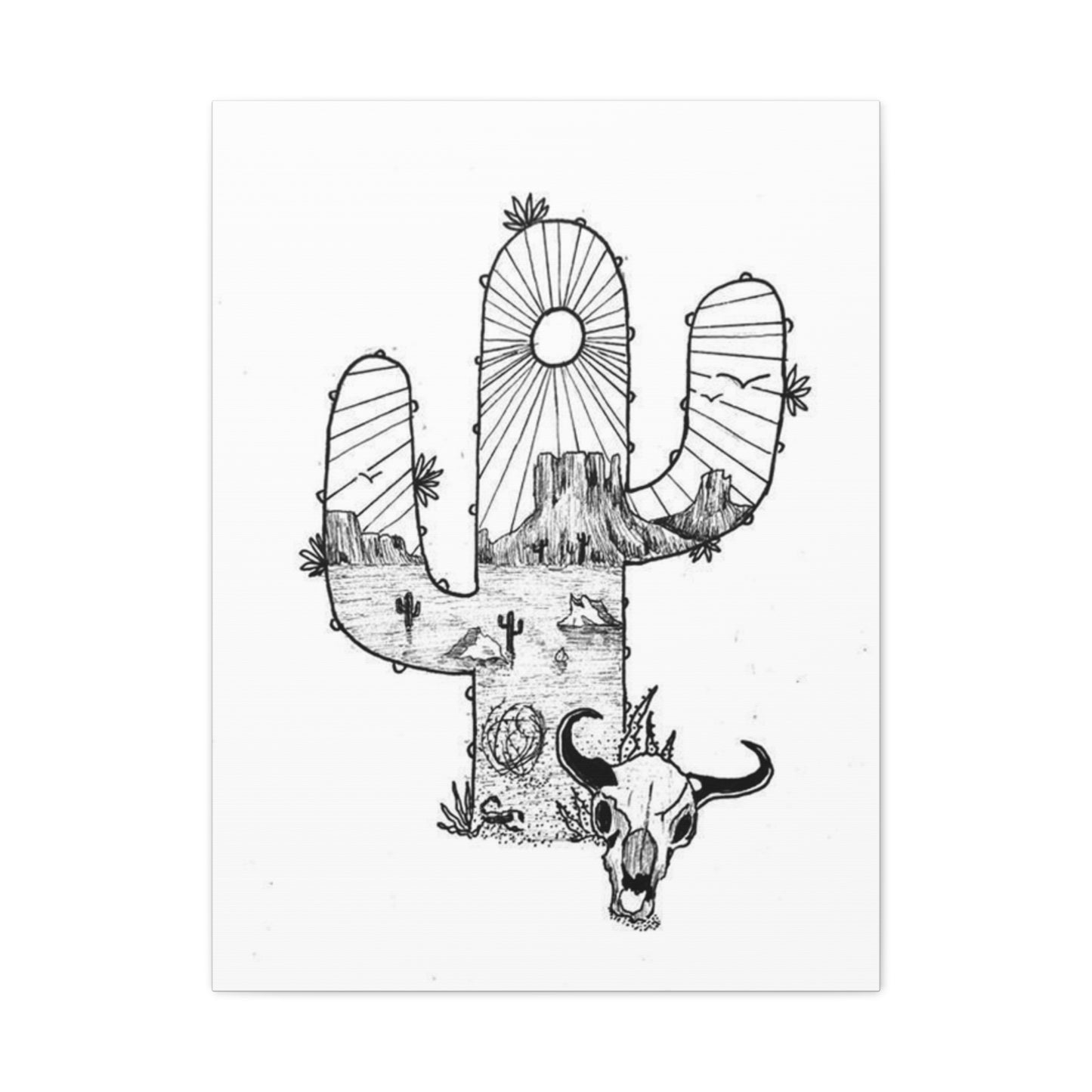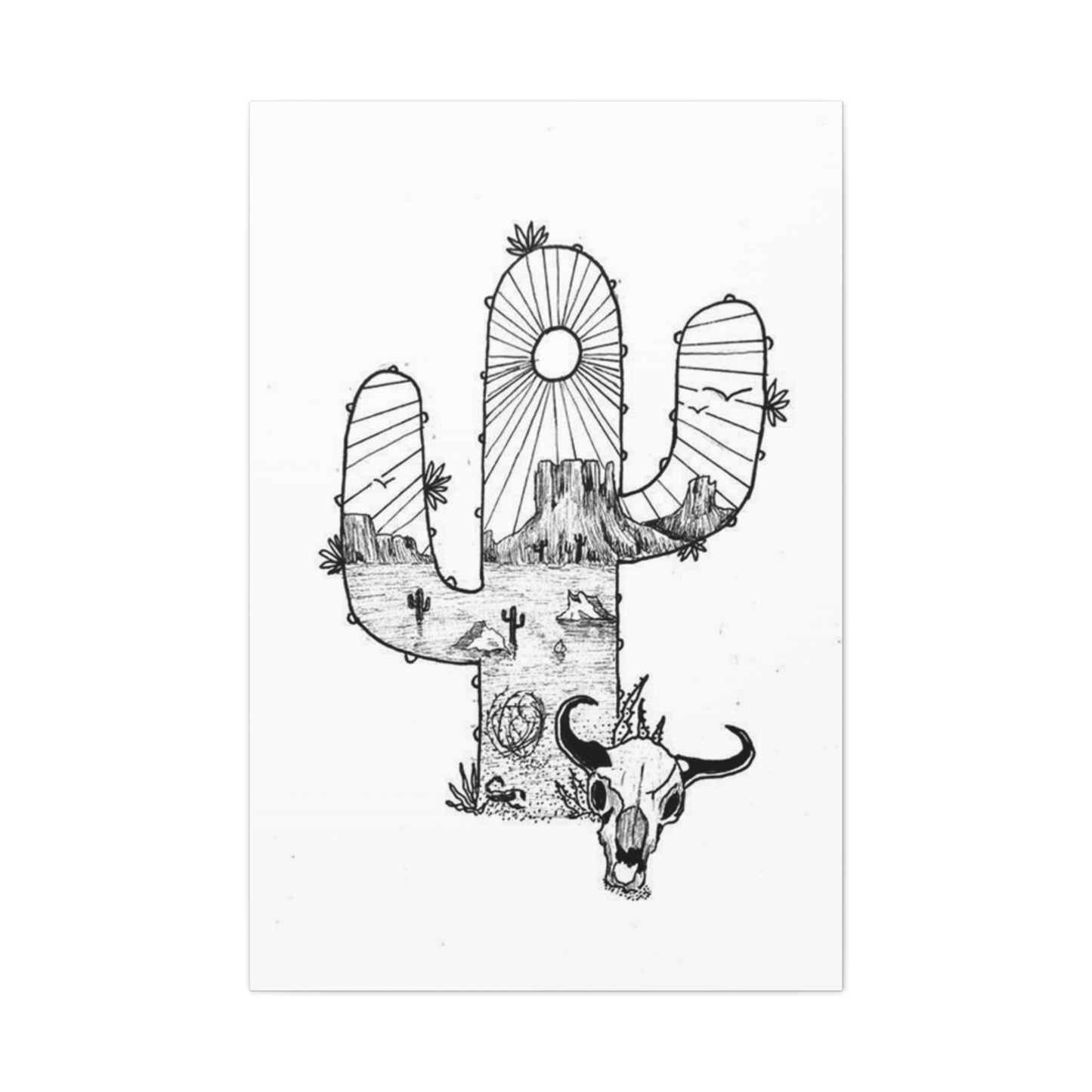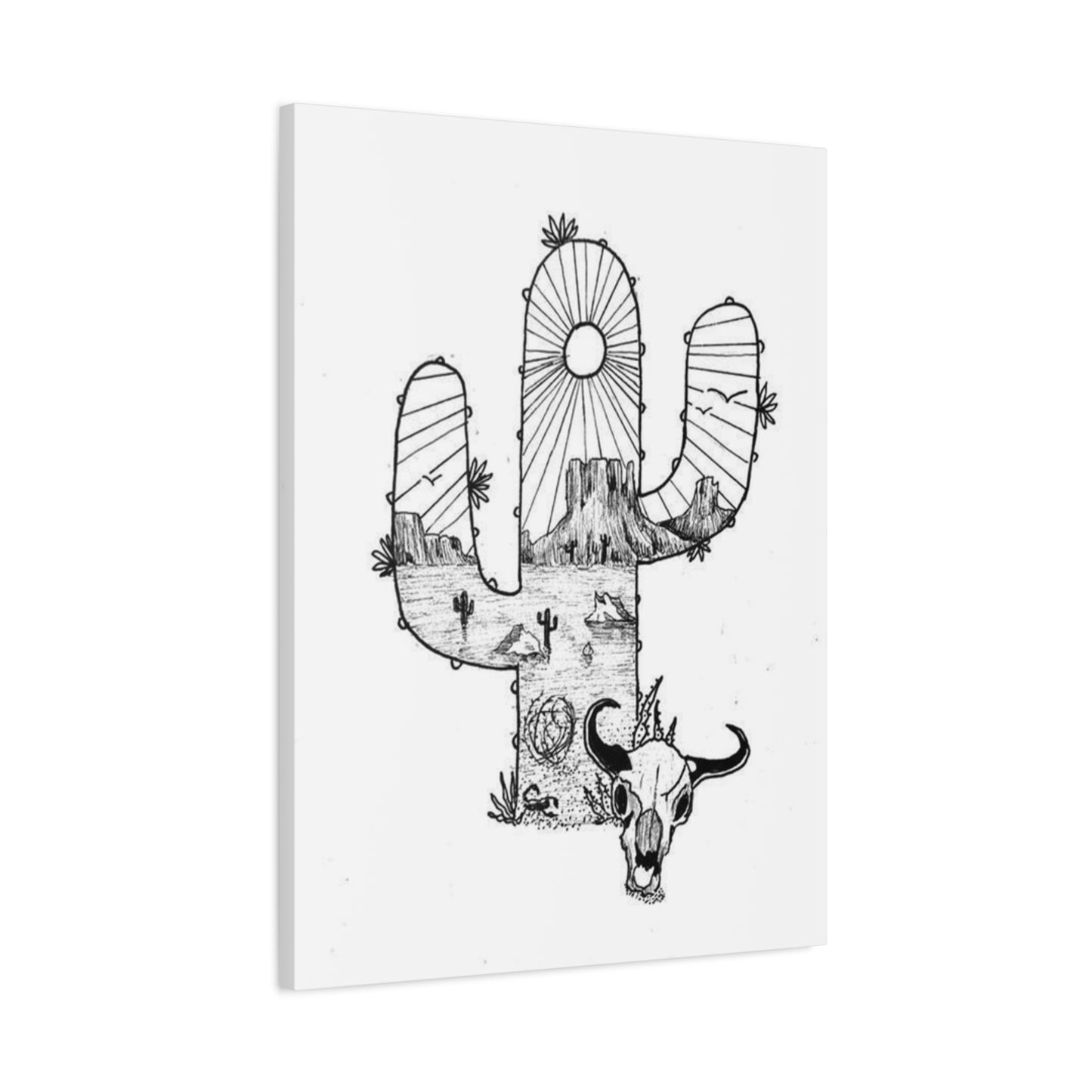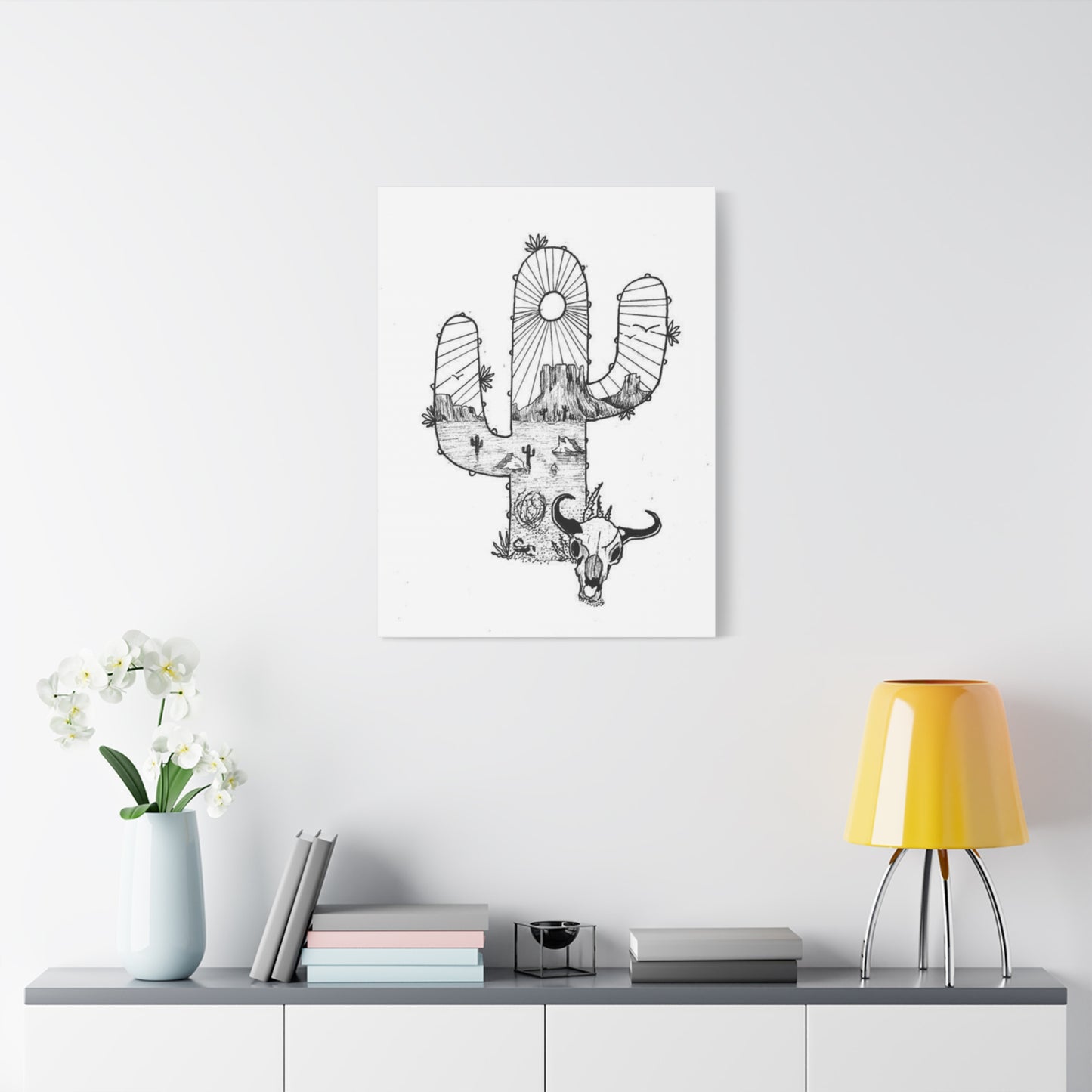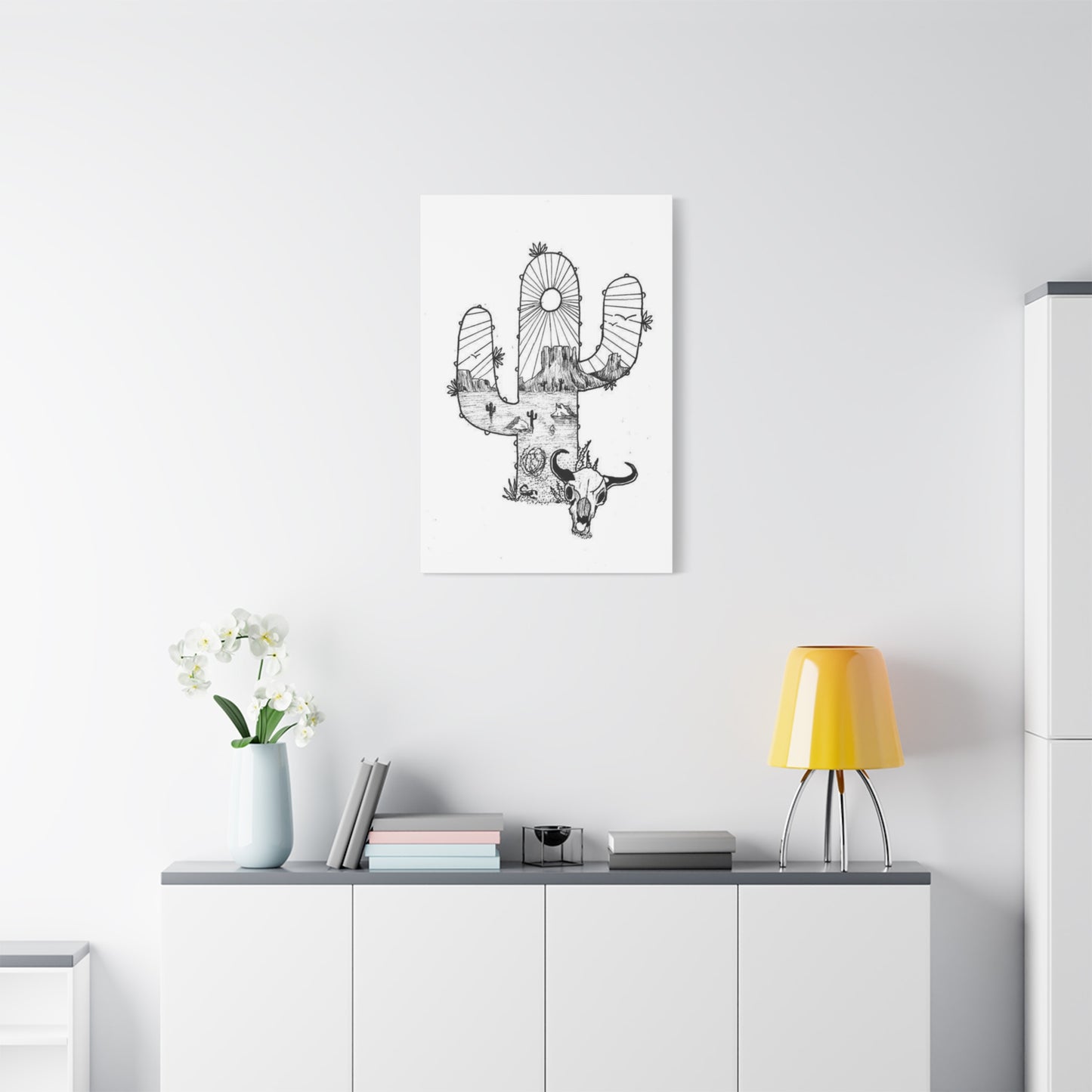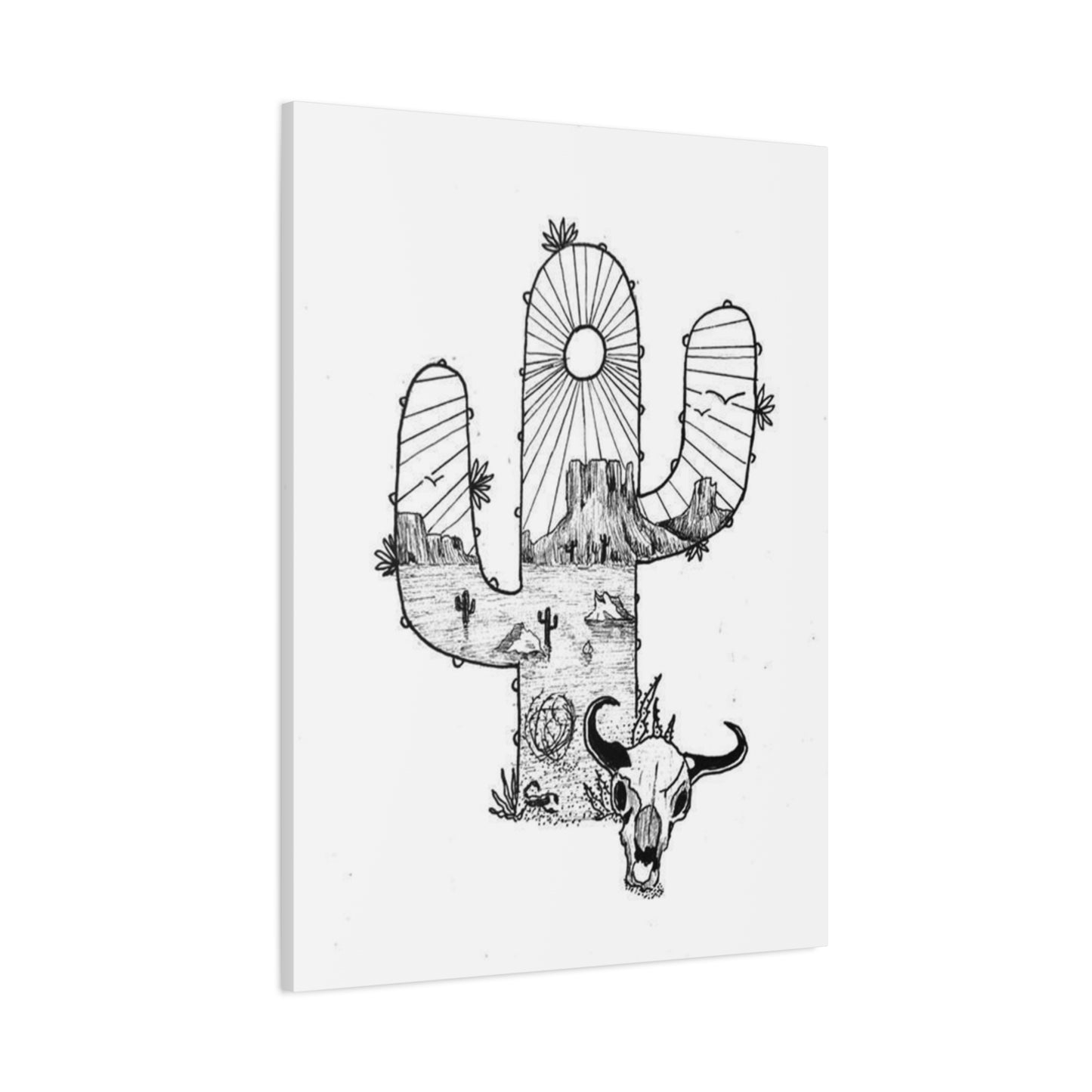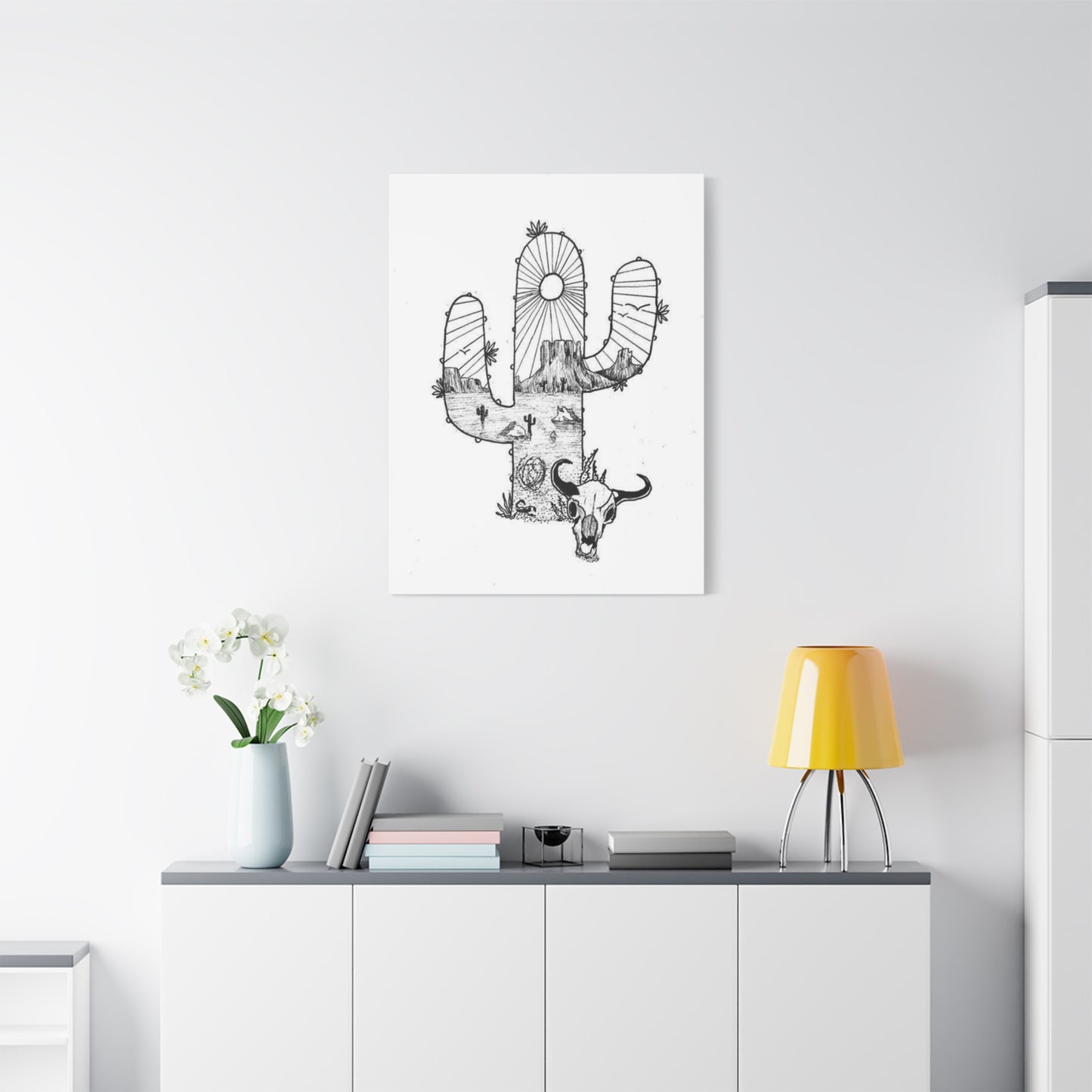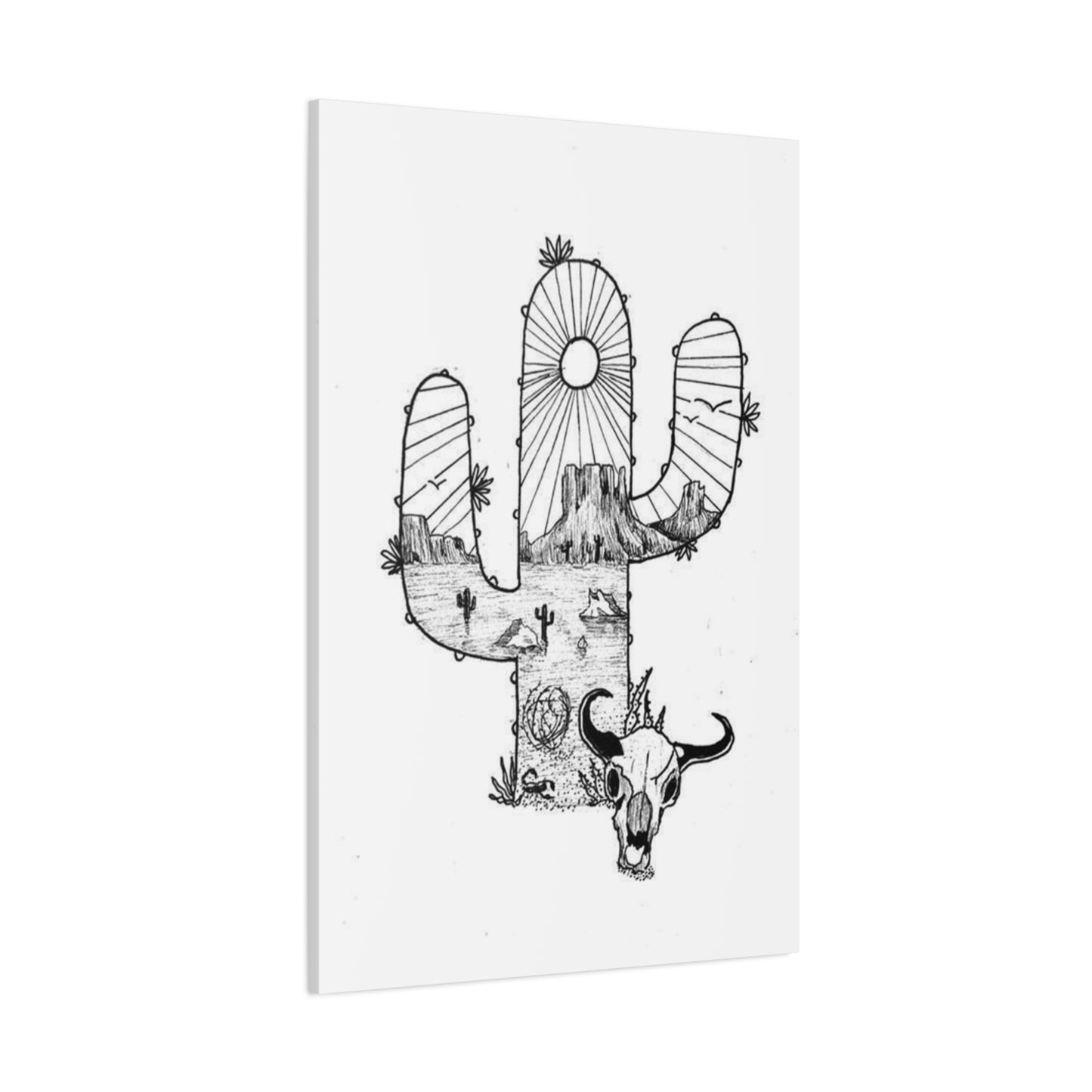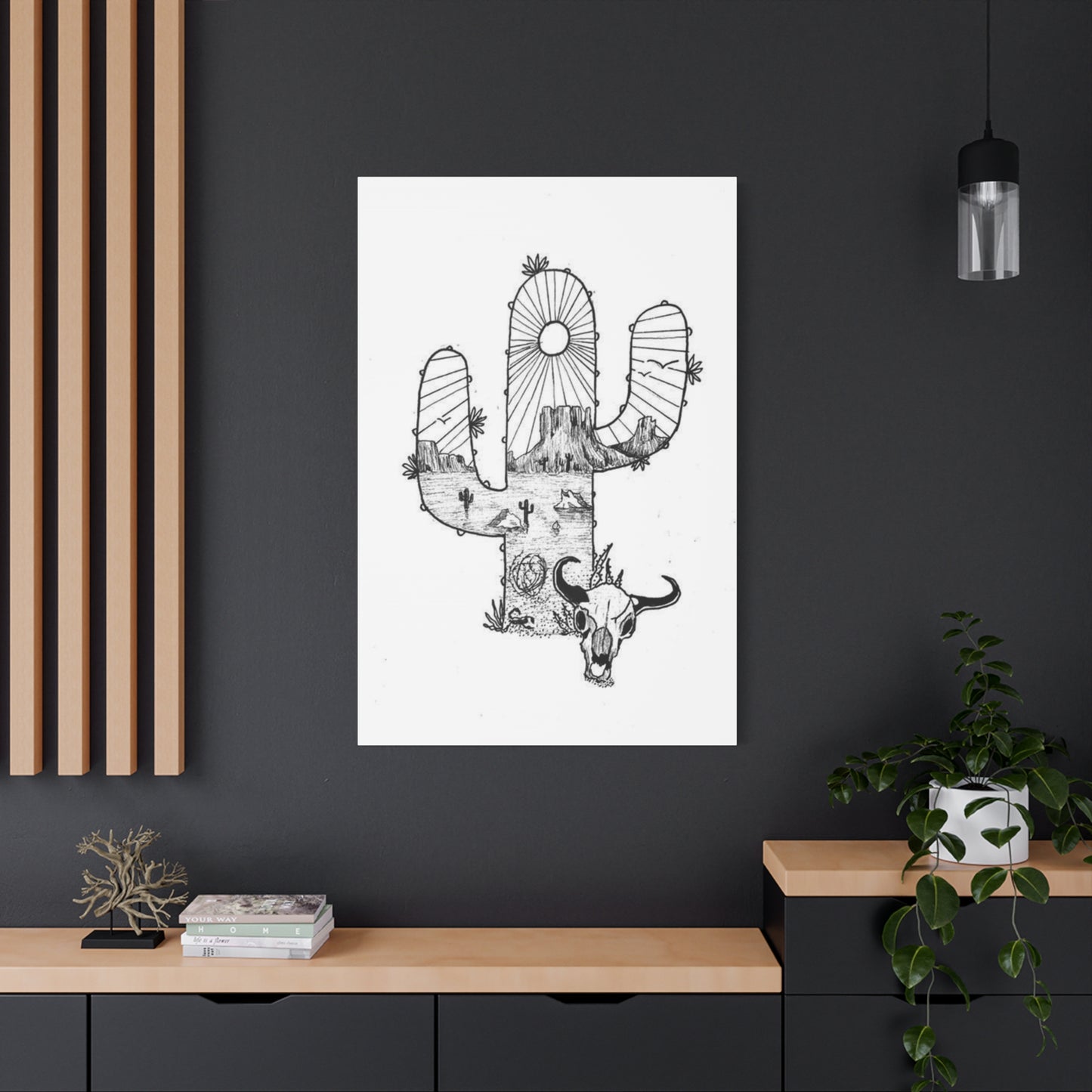Cactus Drawing Wall Art for Every Room: How to Style and Display
When you think about capturing the essence of the American Southwest in your living space, few visual elements speak as powerfully as the combination of desert flora and regional identity. The marriage of prickly pear silhouettes, towering saguaros, and the distinctive outline of the Lone Star State creates artwork that resonates with anyone who appreciates wide-open spaces, rugged landscapes, and the independent spirit that defines this remarkable region. This artistic pairing has become increasingly popular among homeowners, interior designers, and art enthusiasts who want to bring authentic southwestern character into their environments without resorting to tired stereotypes or predictable cowboy motifs.
The beauty of combining state imagery with desert plant life lies in its versatility and depth of meaning. These pieces work equally well in contemporary lofts, traditional ranch-style homes, minimalist apartments, and eclectic creative spaces. The stark geometry of succulent forms provides visual interest while maintaining a clean aesthetic that complements rather than overwhelms existing decor. Meanwhile, the inclusion of geographic shapes adds a layer of personal connection and regional pride that transforms ordinary botanical art into something more meaningful and conversation-worthy.
As more people seek ways to personalize their spaces with artwork that reflects their values, experiences, and connections to place, this style of decoration has moved from niche appeal to mainstream acceptance. Whether you grew up watching sunsets over the Hill Country, spent summers exploring Big Bend National Park, or simply feel drawn to the aesthetic of arid landscapes, incorporating these visual elements into your home creates an atmosphere that feels both grounded and inspired. The following exploration delves deep into why this artistic combination works so effectively, how to incorporate it into various design schemes, and what makes it such an enduring choice for those who want their walls to tell a story.
Making a Statement with Desert Flora and Regional Identity
The decision to display artwork featuring both native plants and geographic outlines on your walls goes beyond simple decoration. This choice communicates something specific about your aesthetic preferences and personal identity. Unlike generic floral prints or mass-produced landscape photography, pieces that combine botanical elements with cartographic shapes create an immediate visual anchor that grounds a space in a particular region and sensibility.
The bold lines and recognizable silhouettes create instant impact when someone enters a room. The human eye naturally gravitates toward familiar shapes, and when those shapes carry both natural beauty and geographic significance, they create a dual point of interest that sustains attention longer than simpler compositions. The contrast between organic plant forms and geometric state boundaries creates visual tension that feels dynamic rather than static, giving these pieces an energy that keeps them engaging over time.
From a design perspective, this artwork category offers remarkable flexibility in terms of scale and placement. A single large statement piece above a sofa or fireplace can anchor an entire room, establishing the design direction for everything else in the space. Alternatively, a gallery wall featuring multiple smaller pieces allows for more complex storytelling, with different plant varieties and artistic interpretations creating a layered narrative. The vertical lines of columnar varieties naturally draw the eye upward, making rooms feel more spacious, while clustered arrangements of smaller species create cozy focal points that invite closer inspection.
The color palette typically associated with these pieces ranges from naturalistic greens and earth tones to more stylized approaches featuring bold contrasts, watercolor washes, or even monochromatic treatments. This range means you can find or commission pieces that work with virtually any existing color scheme, from soft neutrals to vibrant jewel tones. The adaptability of the subject matter to different artistic styles means that whether your taste runs toward photorealistic botanical illustration, abstract interpretation, minimalist line drawings, or folk art approaches, you can find expressions of this theme that align perfectly with your vision.
Beyond aesthetics, there is something inherently optimistic and life-affirming about surrounding yourself with imagery of plants that thrive in challenging conditions. Desert species represent resilience, adaptation, and beauty that emerges from necessity rather than abundance. When combined with the symbolic weight of regional identity, these pieces become daily reminders of strength, independence, and the ability to flourish in your own environment. This psychological dimension adds depth to the purely visual appeal, making these pieces more than just decoration but rather meaningful elements that contribute to the overall atmosphere and emotional tone of your home.
The statement quality of this artwork also makes it an excellent conversation starter. Guests inevitably comment on distinctive pieces, and artwork that combines recognizable elements in interesting ways naturally invites discussion about travel experiences, family history, personal connections to place, or simply appreciation for clever design. In an era when many people feel their living spaces have become too generic or impersonal, choosing artwork with specific regional character helps create environments that feel authentic and intentionally curated rather than accidentally assembled.
Integrating Desert and State Imagery Into Your Living Space
Successfully incorporating this style of artwork into your home requires more than simply hanging a piece on an empty wall. The most effective integration considers the relationship between the artwork and its surrounding environment, creating harmony between the piece and the architectural features, furniture, textiles, and accessories that share the space.
Start by assessing the existing character of your room. If you already have southwestern elements like leather furniture, woven textiles, or warm wood tones, adding botanical artwork with regional elements creates cohesion and strengthens the existing design direction. The artwork becomes part of a larger narrative rather than an isolated element. On the other hand, if your space features a more modern or eclectic aesthetic, these pieces can serve as grounding elements that add warmth and organic character to potentially cold or overly minimalist environments.
Consider the scale relationship between your artwork and your furniture. A common mistake is selecting pieces that are too small for the wall space or furniture they accompany. As a general guideline, artwork hung above a sofa should span roughly two-thirds to three-quarters of the furniture's width. For pieces displayed above console tables or sideboards, similar proportions apply. When the scale relationship feels right, the artwork and furniture read as an intentional grouping rather than unrelated elements that happen to share wall space.
The height at which you hang artwork significantly impacts how it functions within a room. The standard recommendation of placing the center of the piece at eye level works well in many situations, but this guideline should be adjusted based on the room's specific circumstances. In dining rooms where people spend most of their time seated, slightly lower placement often works better. In rooms with high ceilings, you might choose to hang pieces higher to draw the eye upward and emphasize vertical space. When hanging artwork above furniture, aim for roughly six to twelve inches of space between the furniture top and the artwork bottom, adjusting based on the scale of both elements.
Lighting plays a crucial role in how artwork appears and how much impact it makes in a space. Natural light can beautifully illuminate these pieces during daytime hours, but consider how artificial lighting affects them during evening hours when you likely spend more time in these spaces. Picture lights, track lighting, or strategically placed accent lamps can dramatically enhance artwork, bringing out colors and details that might otherwise get lost. Be mindful of direct sunlight on valuable pieces, as prolonged exposure can cause fading over time. If you have a south-facing wall where you want to display artwork, consider UV-protective glass or placement that avoids direct sun exposure during peak hours.
The way you frame and mat artwork influences how it integrates with your space. Traditional wood frames in warm tones complement the organic subject matter and work well in rooms with rustic or traditional design elements. Metal frames in black, bronze, or brushed finishes offer a more contemporary feel that suits modern spaces. The mat color also matters: warm white or cream creates a soft, approachable feel, while bright white provides crisp contrast that makes colors pop. Some pieces work beautifully without mats, especially if you want a more casual, relaxed presentation or if the artwork itself has sufficient internal breathing room.
Think about creating visual relationships between your artwork and other elements in the room. If your botanical piece features predominantly green tones, echoing those greens in throw pillows, plants, or decorative accessories creates cohesion. If the artwork includes warm terracotta or rust tones, repeating those colors elsewhere helps tie the room together. This does not mean everything must match exactly, but creating these color threads helps the space feel considered and intentional.
Layering adds depth and interest to your design. Consider placing your artwork on a wall with complementary architectural features like shiplap, board-and-batten, or textured plaster finishes. Leaning a large piece on a mantel or console table rather than hanging it creates a more casual, collected-over-time feel that can make a space feel more relaxed and personal. Creating vignettes around your artwork with objects like potted succulents, vintage pottery, or meaningful personal items helps integrate the piece into the life of the room rather than treating it as an isolated decorative element.
Where Geography Embraces Desert Landscapes in Visual Art
The intersection of place and nature in artistic expression creates powerful imagery that resonates on multiple levels. When an artist chooses to incorporate both the organic forms found in arid environments and the distinct shape of a geographic region, they create work that operates simultaneously as botanical study, regional celebration, and symbolic representation.
This artistic approach has deep roots in the human relationship with landscape and place. Throughout history, people have created art that connects them to the land they inhabit, from prehistoric cave paintings depicting local fauna to landscape paintings celebrating particular regions. The combination of plant life and geographic shapes represents a modern evolution of this ancient impulse, using contemporary design sensibilities to express timeless themes of belonging and connection to place.
The natural environment of the southwestern region provides endless inspiration for artists. The diversity of species alone offers remarkable variety, from the iconic tall columnar forms found in the Sonoran Desert to the sprawling paddle varieties native to areas further east, from delicate flowering species to massive agave formations. Each variety has its own distinctive silhouette and character, allowing artists to select subjects that match their artistic vision and the emotional tone they want to create.
When artists incorporate regional shapes into botanical compositions, they make choices about how these elements relate to each other. Some compositions place the geographic outline in the background, creating a sense of place without overwhelming the botanical subject. Others integrate the two elements more fully, perhaps using the outline as a container for the botanical elements or creating scenes where plants appear to grow from the geographic shape itself. These compositional choices affect how viewers experience the work and what meaning they derive from it.
The symbolic weight of both elements enriches the artistic impact. Desert plants carry associations with resilience, adaptation, patience, and unexpected beauty. They remind us that life finds ways to flourish even in challenging conditions, that protective barriers can coexist with delicate blooms, and that what appears harsh on the surface often harbors surprising softness. When combined with geographic shapes that represent identity, pride, independence, and connection to place, these symbolic layers create artwork that communicates on both conscious and subconscious levels.
Different artistic styles bring different qualities to this subject matter. Realistic botanical illustration celebrates the intricate details of plant structure, from the pattern of spines to the texture of skin, creating work that appeals to both aesthetic and scientific sensibilities. Impressionistic approaches capture the essence and feeling of desert landscapes without getting caught up in precise details, often using color and brushwork to convey the heat, light, and atmosphere of arid environments. Minimalist interpretations reduce forms to their essential lines and shapes, creating elegant compositions that emphasize geometry and negative space. Folk art approaches often incorporate bold colors, simplified forms, and decorative patterns that give the work a handcrafted, accessible quality.
The medium choices artists make also significantly impact the final piece. Watercolor lends itself beautifully to this subject matter, with its transparency and flowing quality suggesting the intense light and subtle color gradations of desert environments. Ink drawings emphasize line and form, creating bold graphic statements that work particularly well in contemporary spaces. Oil and acrylic paintings allow for rich color saturation and textural variety, while digital illustration offers precision and the ability to create perfectly balanced compositions. Photography brings documentary authenticity, while mixed media approaches can incorporate actual plant materials, sand, or other elements that create literal connections to the landscape.
Some artists choose to push beyond literal representation, using desert plants and regional shapes as starting points for more abstract explorations. These pieces might deconstruct forms into patterns, use unexpected color palettes that emphasize mood over naturalism, or combine elements in surreal arrangements that prioritize emotional impact over realistic representation. This more conceptual approach appeals to collectors who want work that sparks imagination and interpretation rather than simply documenting what exists.
The growing appreciation for this artistic genre reflects broader cultural trends toward authenticity, connection to place, and bringing nature into living spaces. As people spend more time in built environments and digital spaces, the hunger for visual reminders of the natural world increases. Artwork that combines botanical subjects with geographic identity satisfies both the desire for natural imagery and the need for personal meaning and regional connection.
The Perfect Match for Southwestern Interior Design
Southwestern interior design represents one of the most distinctive regional styles in American home decoration, drawing inspiration from Native American, Spanish Colonial, Mexican, and cowboy cultures. This design approach emphasizes natural materials, warm earth tones, handcrafted elements, and a strong connection to the landscape. Within this context, artwork featuring desert plants and regional geography functions not as an accessory but as an essential element that completes the aesthetic vision.
The color palette typical of southwestern design aligns beautifully with desert botanical artwork. Warm terracotta, adobe pink, sunset orange, and golden yellow create the foundation, often accented with turquoise, deep red, or chocolate brown. These colors appear naturally in desert landscapes at different times of day and in different seasons, so botanical artwork featuring authentic natural coloring integrates seamlessly. Even pieces that take artistic liberties with color can work if they maintain the warm, earthy sensibility that defines the style.
Natural materials form another cornerstone of southwestern design, and artwork featuring plants celebrates this same principle. The organic forms of botanical subjects echo the irregular shapes of natural wood furniture, the varied textures of woven textiles, and the handcrafted quality of ceramic and pottery accessories. When you place a piece depicting spiny desert plants on a wall near furniture made from weathered wood or leather, the visual conversation between these elements creates a cohesive environment that feels intentional and harmonious.
Texture plays a significant role in southwestern interiors, with rough plaster walls, woven baskets, nubby textiles, and rustic wood all contributing tactile interest. While artwork is primarily visual, the subjects depicted can suggest texture in ways that complement the physical textures throughout the room. A detailed illustration that captures the sharp spines and rough skin of a desert plant creates a visual texture that relates to the actual textures of nearby objects, adding another layer of cohesion to the design.
The emphasis on handcrafted and artisanal elements in southwestern design means that original artwork or limited edition prints carry more weight than mass-produced decorations. Pieces that show evidence of the artist's hand, whether through visible brushstrokes, the irregular edges of handmade paper, or the unique characteristics of individual prints, align with the southwestern preference for objects that tell stories and carry the mark of their makers.
Southwestern design often incorporates cultural motifs and patterns from Native American and Mexican traditions. While your botanical artwork might not include these specific patterns, the subject matter connects to the same landscape and cultural context. Desert plants have been central to indigenous cultures for thousands of years, used for food, medicine, shelter, and spiritual practices. Artwork depicting these plants carries echoes of this cultural significance even when rendered in contemporary artistic styles.
The architectural features common in southwestern homes provide ideal backdrops for this type of artwork. Exposed wood beams, kiva fireplaces, arched doorways, and textured plaster walls all create interesting relationships with framed pieces. A large botanical piece hung on a wall with rough plaster texture benefits from the visual contrast between the smooth artwork surface and the irregular wall texture. Pieces displayed near architectural features like fireplaces or built-in niches become part of the architectural story rather than afterthoughts added to fill empty spaces.
Southwestern style ranges from rustic and traditional to sleek and contemporary, and botanical artwork with regional elements adapts to these variations. In a traditional southwestern interior with heavy wood furniture and rich colors, a more detailed, naturalistic piece might work best. In a contemporary interpretation with clean lines and a more restrained palette, a minimalist drawing or abstract composition could be more appropriate. The flexibility of the subject matter allows it to move across this style spectrum while maintaining relevance and impact.
Lighting in southwestern interiors often mimics the quality of natural desert light, with an emphasis on warmth and avoiding harsh fluorescent sources. This lighting approach flatters botanical artwork, making colors appear rich and creating subtle shadows that add depth. Consider using warm-toned LED bulbs or incandescent lighting to illuminate your pieces, creating an environment where the artwork glows rather than simply being seen.
The indoor-outdoor living philosophy central to southwestern design finds expression in artwork that celebrates outdoor elements. When your interior walls display images of plants that thrive in the exterior landscape, you create visual continuity between inside and outside spaces. This connection feels especially powerful if you can see actual desert plants through windows near your artwork, creating a dialogue between artistic representation and living reality.
Deeper Meanings Behind Desert Plants and Regional Boundaries in Visual Art
Art that combines botanical subjects with geographic shapes operates on multiple symbolic levels, communicating meanings that extend far beyond simple decoration. Understanding these symbolic dimensions helps you appreciate why these pieces resonate so strongly and why they continue to appeal across different demographics and design preferences.
Desert plants themselves carry rich symbolic meaning across cultures and throughout history. Their ability to thrive in environments that would kill most other plants makes them universal symbols of resilience and adaptation. When life gets difficult, these plants remind us that survival is possible even under harsh conditions. They teach patience, as many species grow slowly but live for decades or even centuries. They demonstrate that protection and vulnerability coexist, with sharp defensive spines surrounding soft inner flesh or protecting delicate blooms.
The blooming cycle of many desert species adds another layer of symbolism. After months or years of appearing dormant or simply surviving, these plants suddenly produce spectacular flowers, often in response to rain or seasonal changes. This dramatic transformation represents the rewards of patience, the beauty that emerges from hardship, and the cyclical nature of challenge and abundance in life. Artwork depicting blooming specimens carries these associations, creating pieces that feel hopeful and life-affirming rather than harsh or forbidding.
Water storage abilities of succulents and related species symbolize wisdom and preparedness. These plants collect and conserve resources during times of plenty, allowing them to endure through periods of scarcity. This pragmatic approach to resource management resonates as a metaphor for how we might live our own lives, balancing enjoyment with preparation and living sustainably within our means.
The geographic shape element adds layers of meaning related to identity, belonging, and pride of place. Regional boundaries represent collective identity, shared history, and connection to a particular landscape and culture. When someone displays artwork featuring their home region, they make a statement about their own identity and the aspects of that place they value. For transplants, such artwork can represent nostalgia and continued connection to places left behind. For long-time residents, it celebrates ongoing rootedness and pride in their community and environment.
The combination of these symbolic elements creates artwork that speaks to both individual strength and collective identity. The plants represent the individual journey of resilience and adaptation, while the geographic shape represents the larger community and culture that provides context and meaning to that individual experience. Together, they create a visual statement about belonging while remaining independent, adapting while staying rooted, and thriving in your particular environment.
Color choices in these pieces add additional symbolic dimensions. Green represents growth, life, and renewal. Earth tones connect to stability, groundedness, and natural cycles. Blues evoke sky and rare water sources, adding elements of hope and spiritual dimension. Warm colors like orange, red, and yellow bring energy, passion, and the intense light of desert environments. Artists who work with color symbolically create pieces that operate on emotional and psychological levels beyond their surface appearance.
The way artists position elements within compositions also carries meaning. Plants that appear to grow from or within geographic shapes suggest organic connection between identity and environment. Plants that appear in front of or beside geographic shapes create different relationships, perhaps suggesting how individuals stand apart from or within their cultural context. The size relationship between elements matters too: large plants with small geographic details suggest nature's dominance, while the reverse emphasizes human definition of space and territory.
Some pieces incorporate additional symbolic elements like stars, moon, or sun imagery, adding celestial dimensions that reference navigation, cycles, and the vast skies characteristic of open desert landscapes. Birds or other wildlife can appear, suggesting the ecosystem that depends on these plants and creating more complex environmental narratives. Mountains or other landscape features root the imagery more specifically in place, moving from abstract geographic shapes to recognizable topography.
The frame and presentation choices you make also affect symbolic meaning. Rustic frames suggest authenticity and connection to traditional values. Sleek modern frames emphasize contemporary relevance and forward-looking perspective. Matting colors influence emotional tone: warm neutrals feel welcoming, bright whites feel fresh and energetic, deeper colors create more dramatic, serious moods. Even the decision to frame under glass versus leaving unglassed creates different relationships with the viewer, with glass adding protection and formality while unglassed pieces feel more accessible and casual.
Understanding these symbolic dimensions helps you select pieces that align not just with your aesthetic preferences but with the values and ideas you want your living space to embody. When your decor choices reflect genuine meaning rather than arbitrary selection, your home becomes a more authentic expression of who you are and what matters to you.
Adding Rustic Character Through Desert Plant Artwork
Rustic design celebrates natural materials, simple forms, and the beauty of things that show age, use, and connection to earlier times. Within this design philosophy, artwork featuring desert plants serves as an ideal element that reinforces rustic character while adding visual interest and regional specificity.
The inherent organic nature of botanical subjects aligns perfectly with rustic design's emphasis on natural elements. Unlike geometric abstracts or urban photography, plants connect directly to the earth and natural cycles, bringing that grounding energy into your space. The irregular shapes, varied textures, and natural color variations of desert species feel particularly appropriate in rustic settings because they embody the imperfect, unmanicured beauty that defines the style.
Weathered wood frames enhance rustic character while showcasing botanical artwork effectively. Look for frames made from reclaimed wood with visible grain patterns, knots, and color variation. Distressed finishes that show the wood's history rather than covering it create perfect partners for artwork celebrating plants that have weathered harsh conditions. The combination of natural wood and natural subjects creates redundant reinforcement of organic, earth-connected themes.
The texture contrast between smooth artwork and rough surroundings enhances both elements. When you hang a detailed plant drawing on a wall made of weathered barn wood or rough plaster, each element makes the other more interesting. The smoothness of the artwork provides visual relief from textural surroundings, while the textured environment gives the artwork something to push against, making it stand out more effectively.
Scale considerations matter in rustic spaces, which often feature larger, heavier furniture and more substantial architectural elements than contemporary interiors. Artwork needs sufficient visual weight to hold its own without getting lost. Larger pieces or groupings of multiple pieces create the necessary presence to function effectively in these environments. Oversized botanical prints can become focal points that anchor entire walls, providing the same kind of visual weight as the substantial furniture pieces typical of rustic design.
The story element central to rustic design finds natural expression in botanical artwork, especially pieces that appear handcrafted or show evidence of artistic process. Vintage botanical prints carry literal history, while contemporary pieces rendered in traditional techniques like botanical illustration or woodcut printing connect to artistic traditions with centuries of history. When you display such pieces in rustic settings, they contribute to the accumulated-over-time quality that makes rustic interiors feel collected rather than decorated.
Color palettes in rustic design typically emphasize natural tones: various browns from pale driftwood to deep chocolate, greens from sage to forest, creams and off-whites, and accent colors drawn from nature like rust, gold, or deep red. Desert plant artwork naturally incorporates many of these colors, making integration effortless. Even pieces with more stylized or vibrant coloring can work if they maintain connection to natural color inspiration rather than venturing into purely synthetic or neon territories.
Layering creates depth in rustic spaces, and artwork participates in this layering strategy. Consider displaying botanical pieces on mantels propped against the wall rather than hung, allowing other objects to be arranged in front. Create vignettes where artwork appears among collections of natural objects like stones, driftwood, or dried plants. This approach makes the artwork part of the room's life rather than something separate and untouchable.
Rustic spaces often incorporate found objects and repurposed items, and this sensibility can extend to how you acquire and display artwork. Vintage prints found at flea markets or estate sales bring authentic history and the thrill of discovery. Pieces created on reclaimed materials like old fence boards or barn siding create literal connections between the artwork and rustic materials. Even new artwork can be displayed in ways that feel found or inherited rather than newly purchased: removing glossy glass in favor of no glazing or museum glass, using clip frames instead of traditional ones, or displaying unframed pieces tacked directly to walls.
The handmade quality valued in rustic design extends to artwork selection. Original paintings, hand-pulled prints, or drawings show evidence of human hands and artistic decisions in ways that digital prints or mass-produced posters cannot match. Even if your budget requires prints rather than originals, seek out pieces from smaller artists or limited editions that maintain some connection to handcrafted traditions rather than purely industrial reproduction.
Lighting in rustic spaces tends toward warm sources that mimic firelight or early morning sun. This lighting preference flatters botanical artwork, making greens appear richer and warm tones glow. Consider displaying important pieces near windows where natural light can illuminate them during the day, or use picture lights with warm-toned bulbs to create appealing evening illumination.
The authenticity central to rustic design requires that your artwork choices feel genuine to you rather than selected purely for aesthetic coordination. Choose pieces depicting plants that mean something to you personally, whether because you grew up around them, encountered them during meaningful travels, or simply find them compelling. This personal connection shows and contributes to the authentic, lived-in quality that distinguishes truly successful rustic interiors from staged magazine rooms.
Merging Natural Forms with Regional Identity in Visual Compositions
The artistic fusion of botanical subjects and geographic shapes creates a unique visual category that satisfies multiple aesthetic and emotional needs simultaneously. This merger works on compositional, symbolic, and practical levels, producing artwork that offers more complexity and interest than either element would provide alone.
Compositionally, the combination creates natural balance between organic and geometric forms. Desert plants, with their irregular growth patterns and varied shapes, provide visual interest and organic energy. Geographic boundaries, with their angular lines and distinct edges, provide structure and grounding. Together, these elements create tension and resolution within single compositions, giving the eye both freedom and direction as it moves across the image.
Artists employ various strategies for integrating these elements effectively. Some use the geographic shape as a background or foundation, placing botanical subjects in front or within the boundary. This approach emphasizes the plants while maintaining geographic context. Others reverse this relationship, using botanical elements as background or pattern with the geographic shape as the primary focus. Some create more integrated compositions where the elements interweave, perhaps with plants appearing to grow from the geographic shape or the outline being formed by botanical elements.
The scale relationship between elements significantly impacts how viewers perceive the piece. Large geographic shapes with smaller botanical details emphasize place and region, with the plants serving as decorative or identifying elements. Larger botanical subjects with smaller geographic references shift emphasis toward nature and growth, with the geographic element providing context without dominating. Balanced scales create more ambiguous relationships where neither element clearly dominates, inviting viewers to consider how nature and human-defined geography relate.
Color choices influence how successfully these elements merge. Monochromatic approaches unify disparate elements through shared color, creating cohesion that might not exist if the elements appeared in contrasting colors. Limited color palettes with distinct colors assigned to different elements create clear separation while maintaining overall harmony. More complex color schemes might use gradients or color transitions that move across both elements, creating visual connections that help them read as unified wholes rather than separate pieces.
Line quality affects the relationship between elements significantly. Consistent line weight throughout creates unified compositions where botanical and geographic elements feel equally present and important. Varied line weights can create hierarchy, with bolder lines emphasizing primary elements and finer lines suggesting secondary details. Some artists use entirely different line qualities for different elements, perhaps rendering plants in loose, sketchy lines while using precise, hard-edged lines for geographic shapes, creating dynamic contrast.
The level of detail and realism applied to each element influences perception and meaning. Highly detailed, photorealistic botanical subjects paired with simplified, iconic geographic shapes create pieces that celebrate nature while acknowledging region. The reverse treatment, with stylized or abstracted plants and detailed, topographically accurate geography, shifts emphasis toward place while maintaining natural connection. Matching levels of detail across all elements creates different effects depending on whether both are highly detailed or both simplified.
Background treatment significantly impacts how successfully the main elements merge. Empty white backgrounds create clean, graphic compositions that emphasize the depicted elements without distraction. Colored backgrounds unify compositions and can suggest environment, with blues suggesting sky, earth tones suggesting land, or gradients suggesting light changes across landscape. Textured backgrounds add visual interest and can suggest material qualities like paper, canvas, or wall surfaces. Some pieces incorporate photographic or painted landscape backgrounds that place the main elements in specific environmental contexts.
The edges of elements and how they relate to composition boundaries matter. Elements that extend beyond composition edges create dynamic, energetic feelings suggesting life and growth beyond the frame. Elements completely contained within boundaries feel more controlled and complete. Bleeding one element type off edges while containing the other creates asymmetric relationships that can feel contemporary and less formal.
Multiple element arrangements offer additional compositional possibilities. Rather than single plant with single geographic shape, some pieces feature multiple plant species or varieties, creating more complex botanical narratives. Others might include multiple geographic shapes or regions, perhaps showing progression across a larger area or comparing different locations. These more complex compositions require careful arrangement to avoid visual confusion, but when successful they offer richer, more layered viewing experiences.
The decision to include additional contextual elements influences how the primary components read. Some artists add text identifying plant species or regions, creating pieces that function partly as educational diagrams. Others incorporate decorative elements like borders, patterns, or ornamental flourishes that frame and enhance the central subjects. Still others keep compositions spare, allowing the essential elements to speak without elaboration or explanation.
Understanding these compositional strategies helps you evaluate artwork more critically and select pieces that work effectively in your specific spaces. It also provides language for discussing preferences with artists if you pursue commissioned work, ensuring clear communication about the aesthetic you seek.
The Magnetic Appeal of Regional Desert Aesthetics
Southwestern visual style has evolved into one of the most recognizable and enduring regional aesthetics in American culture. Its appeal extends far beyond the geographic boundaries of the desert southwest, attracting enthusiasts across the country and around the world. Understanding what makes this aesthetic so compelling helps explain why artwork featuring desert plants and regional elements continues to grow in popularity.
The color palette draws people immediately. The warm earth tones characteristic of southwestern design create environments that feel welcoming and comfortable. Unlike cooler color schemes that can feel distant or austere, the warm oranges, terracottas, golds, and browns of southwestern style create psychological warmth that makes spaces feel inhabited and hospitable. These colors also have near-universal appeal, working across cultural contexts and personal preferences in ways that more specific or trendy color schemes cannot match.
The connection to nature central to southwestern aesthetics resonates in an increasingly urbanized world. As more people live in cities and spend their days in built environments, hunger for natural elements in living spaces grows. Southwestern style satisfies this need while offering a specific flavor distinct from other nature-oriented design approaches like cottagecore, farmhouse, or tropical styles. The particular character of desert nature, with its dramatic forms and unexpected beauty, provides visual interest that more temperate natural environments might lack.
The emphasis on handcrafted and artisanal elements appeals to those who feel alienated by mass production and disposable consumer culture. Southwestern design celebrates objects made by skilled hands using traditional techniques, from woven textiles to hand-thrown pottery to handcrafted furniture. While not everyone can afford or access truly handmade pieces, the aesthetic prioritizes objects that show character and individuality over perfect factory uniformity. Artwork featuring desert plants, especially pieces showing evidence of artistic hand and process, participates in this celebration of craft and individual creation.
The cultural richness behind southwestern style adds depth and meaning that purely aesthetic design approaches lack. This region's design traditions draw from Native American, Spanish Colonial, Mexican, and pioneer cultures, creating visual vocabularies that carry historical weight and cultural significance. While appropriation concerns require thoughtful navigation, genuine appreciation for these cultural contributions and respectful incorporation of southwestern elements can create spaces that honor tradition while remaining contemporary and personal.
The indoor-outdoor living philosophy suits contemporary lifestyles that value flexibility and connection to exterior spaces. Southwestern design blurs boundaries between inside and outside, with large windows, covered patios, and design elements that create visual continuity between interior and exterior spaces. Artwork depicting outdoor plant life visible through windows contributes to this continuity, helping interior spaces feel connected to the landscape rather than isolated from it.
The boldness and confidence of southwestern style appeal to those who want distinctive homes rather than safe, neutral spaces. Unlike design approaches that emphasize subtlety and restraint, southwestern interiors make strong statements through color, pattern, and form. This confidence attracts people who view their homes as expressions of personality rather than backdrops to be kept as unobtrusive as possible. Desert plant artwork, with its distinctive silhouettes and often bold composition, fits naturally into this confident design approach.
The versatility of southwestern style allows it to adapt to different contexts and preferences. Traditional southwestern design creates warm, rustic environments filled with texture and craft. Contemporary southwestern style maintains cultural connections and natural elements while incorporating cleaner lines, more restrained color palettes, and modern materials. This flexibility means people can embrace southwestern aesthetics without committing to a single rigid interpretation, allowing personal expression within regional traditions.
The aspirational lifestyle associations with southwestern style cannot be ignored. Desert regions suggest escape from crowded urban environments, slower pace, abundant sunshine, dramatic landscapes, and connection to frontier history. For those who cannot or do not wish to relocate, incorporating southwestern design elements and imagery into their current homes allows them to claim some of these associations and create environments that reflect desired lifestyle qualities rather than current circumstances.
Enduring Beauty in Desert Flora and Geographic Artwork for Living Spaces
Certain design elements prove themselves timeless, remaining relevant and appealing across decades while temporary trends come and go. Artwork combining botanical subjects with regional geographic shapes demonstrates several qualities that suggest lasting appeal rather than momentary fashionability.
The subject matter connects to fundamental human experiences and needs rather than reflecting current social trends or technological moments. Desert plants have existed for millennia and will continue thriving regardless of human fashion cycles. Geographic boundaries represent more stable elements of identity than most cultural markers. Because these subjects transcend particular moments in time, artwork depicting them maintains relevance across changing contexts.
The design flexibility of this artwork category allows it to adapt to evolving aesthetic preferences without losing its essential character. The same subject matter can be rendered in traditional botanical illustration style, contemporary minimalist line drawings, bold graphic designs, or abstract interpretations. This adaptability means that as design preferences shift, artists can reinterpret these themes in ways that feel current while maintaining connection to the enduring appeal of the subjects themselves.
Conclusion
Cactus drawing wall art offers a unique way to infuse your living space with a touch of nature’s rugged beauty and the elegance of minimalist design. With their intricate lines, vibrant textures, and varied shapes, cactus drawings can transform any room into a sanctuary of style, creativity, and warmth. Whether you're drawn to the desert's harsh beauty or simply appreciate the striking visual impact of these plants, cactus art can enhance your decor in countless ways, adding a modern, earthy vibe to your home.
One of the most appealing aspects of cactus drawing wall art is its versatility. Cacti come in so many different shapes and sizes, from the spiky, towering saguaro to the delicate, rounded prickly pear, each evoking a unique feeling and aesthetic. This diversity means that cactus art can suit almost any room, from your living room to your bedroom, bathroom, or even a home office. Whether you prefer a single, bold cactus illustration as a statement piece or a collection of smaller drawings arranged in a gallery wall, these pieces can be adapted to fit the style and energy of any space.
In the living room, cactus drawings can serve as striking focal points that invite conversation and reflection. Their clean lines and organic shapes pair beautifully with minimalist, boho, or contemporary decor. For a laid-back, southwestern look, combine cactus artwork with warm-toned textiles, wood furniture, and earthy accents. If you’re looking for a more modern vibe, pairing cactus drawings with sleek, monochromatic furniture and industrial elements will make for a sophisticated yet organic space. The contrast between the raw simplicity of cactus art and a more refined or polished interior can create a perfect balance between rustic and contemporary.
In the bedroom, cactus drawing wall art can create a tranquil, grounding atmosphere. Cacti symbolize endurance and resilience, making them a fitting choice for a restful retreat. Opt for more subdued, muted cactus drawings to evoke calmness, or choose vibrant, detailed illustrations for a pop of color and energy. Whether you place them above your bed, on a side wall, or even in a series above your nightstands, cactus art can complement natural textures like linen, wood, and stone, bringing a sense of serenity to your space.
For bathrooms, cactus drawings bring a fresh and clean aesthetic that pairs perfectly with natural stone tiles, light woods, or even a desert-inspired color palette. The natural, botanical theme works particularly well in bathrooms that emphasize simplicity and rejuvenation. Hanging a framed cactus illustration or a series of small drawings in a bathroom is a simple way to elevate the space while introducing a relaxed, earthy vibe that evokes the feeling of a desert oasis.
Cactus drawings also add a unique flair to home offices. Their clean, geometric lines make them ideal for creating an environment that’s both calming and inspiring. Whether you hang a large cactus print above your desk or create a mini gallery of smaller cactus drawings around the room, they’ll help foster a sense of focus and creativity while bringing a natural, organic touch to the workspace. Additionally, the symbolism of a cactus—resilience, adaptability, and growth—can serve as a daily reminder of your strength and potential, motivating you to tackle projects and challenges with determination.
When styling cactus wall art, don’t be afraid to mix and match different frames or styles. For a more eclectic look, experiment with a variety of frame materials—wood, metal, or even floating frames—to add texture and dimension to your display. Consider pairing the art with other nature-inspired elements like plants, succulents, or woven textiles to create a cohesive, earthy aesthetic.
In conclusion, cactus drawing wall art is a timeless and versatile addition to any room in your home. Its clean lines, organic shapes, and natural appeal make it suitable for a variety of styles, from modern and minimalist to boho and rustic. Whether you choose a single illustration or create a collection of cactus artwork, these pieces bring a unique, calming energy to any space, reminding you of nature’s resilience and beauty. By thoughtfully styling and displaying cactus art in your home, you can create an inviting, tranquil environment that reflects your personal taste while also celebrating the wonder of the natural world.

















